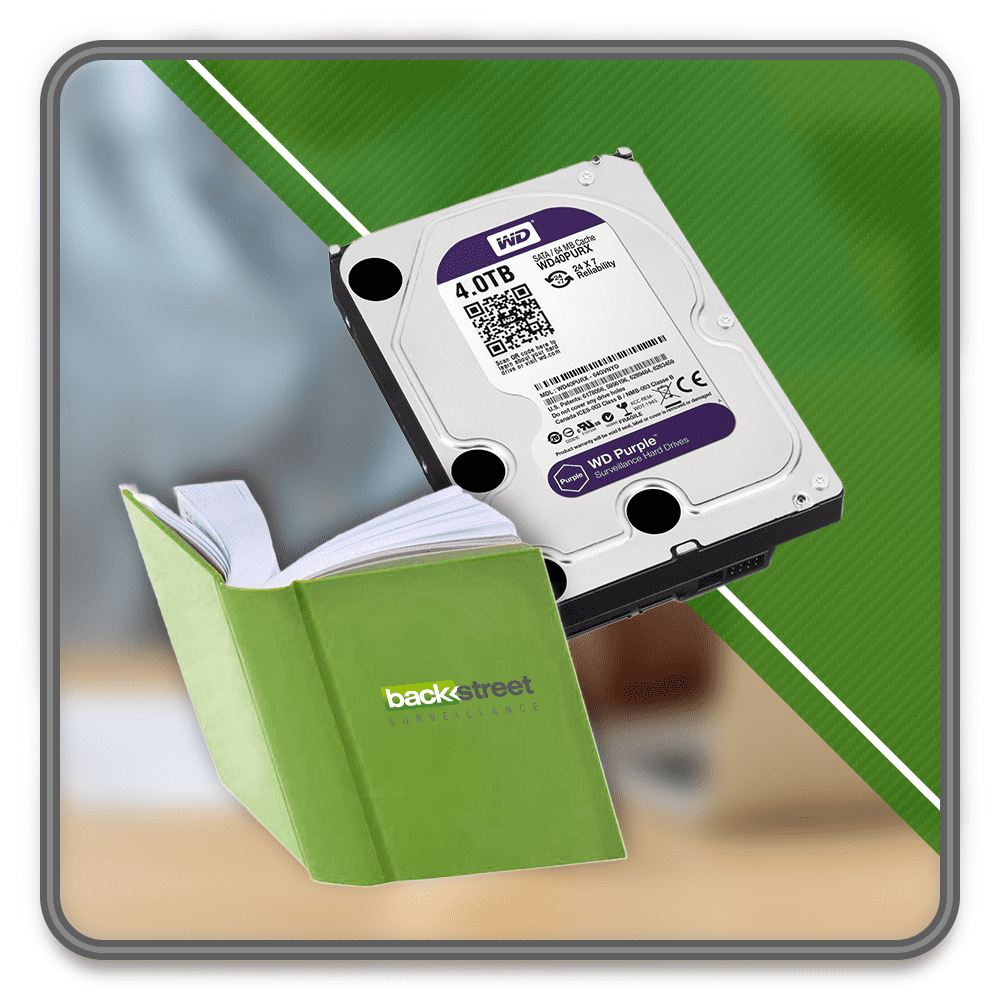12- Wire & Cable - Alternative Transmission Options
Cables
Most IP systems operate on Cat6 network cable. Cat5 is also serviceable and was used until Cat6 arrived on the market a few years ago. Both cables are great for video surveillance. They can transmit far more data than a 4K camera requires, so neither cable will bottleneck data flow or hinder performance in anyway. The difference between Cat5 and Cat6 is relatively insignificant. Cat5 uses 24-gauge conductors while Cat6 uses 23-gauge conductors which is slightly larger than 24-gauge wire. Since the conductors are larger in Cat6 cable, you can send power further than you can with Cat5.
Because Cat6 cable has larger conductors, maximum cable distance from camera to recorder or PoE unit is 300 feet.

There are three main types of Cat6e cable we use: indoor, outdoor, and direct burial. Cat6e is a good quality cable, made with 100% copper and a center separator spline, non-shielded.
Indoor Cable
Indoor cable is the standard cable used with all networks. We offer white Cat6e indoor cable in the following lengths:
Premade Cables


Bulk Cable

Outdoor Cable
Outdoor cable is very similar to indoor cable with the exception the outer PVC jacket is treated to resist the effects of UV rays from the sun, extreme temperature changes, and moisture. We offer white outdoor Cat6e cable in the following lengths:
Premade Cables

Bulk Cable

Direct Burial
Direct burial cable has an extra outer PVC jacket with a gel-filled insulation layer separating the inner cable from the outer jacket. This extra protection makes the cable more expensive and slightly more difficult to work with but allows the cable to be directly buried in the ground or run across a flat roof without the protection of a conduit. The cable will last decades exposed to the elements. If your application includes burying the cable, we recommend that the minimum depth be below the frost line, which is usually 8-12 inches down. We offer black Direct Burial Cat6e cable in the following lengths:
Premade Cables

Bulk Cable

Customer Provided Cable
There are versions of Cat6 which should be avoided. If a customer intends to provide the cable, we advise them to stay clear of Cat6 cable labeled CCA, or Copper-Clad Aluminum. CCA can be identified by a small marking in the corner of the item's label. This is a low-cost, low-quality cable. It is made by taking aluminum conductors and fusing a thin layer of copper to the exterior of each conductor, making it more aluminum than copper. This low-quality cable can cause performance issues such as reduced transmission distance and latency in data transmission. We support the customer providing the cable but we strongly recommend only using authentic Cat6e cable.
Alternative Transmission Options
There are situations where the design requires signal transmission past the normal 300 feet. Below are other solutions we support: PoE Power Control, PoE Extenders, Long Range WiFi, Power Transmitters and Fiber.
Power Control
Some of our PoE units have the ability to double the maximum port distance from 300 feet to 600 feet. This is done with a toggle switch on the PoE unit. The downside is you lose the use of half of the PoE ports. By flipping that toggle switch you doubled the power source for half of the ports by taking the power way from the other half.

Extenders
As you have studied, these units regenerate the video data and power every 300 feet and DO NOT need a power source. They can be directly buried in the ground, but we recommend placing them in a PVC electrical box to help protect the connections. You can use up to three PoE extenders on one camera connection with the exception of PTZ cameras- they draw too much power- and you must limit them to one PoE Extender.

Long Range Wireless
We have excellent wireless solutions. They are reliable, fast, and can reach 3,000 feet. Our solutions are point-to-point antennas. They create their own private, secure, wireless network. PoE units are connected to an antenna which transmits to one receiver connected to the NVR or a network. Multiple antennas can transmit to one receiver.

New! Wifi-Arrow

Click here to visit our wireless section on our website.
Power Transmitters Item: PWR-Trans-Kit
If you find running a cable from the video recorder location to your internet modem (for remote viewing) is a problem; this kit is the answer. Plug one unit into the wall outlet and connect the video recorder to it using a network cable. At the modem location plug the other unit into the wall outlet and use a network cable to connect the two. The power line units transmit the video data signal across your home or business 110v power grid. A simple, easy solution to a hard wire run.

If you have, lets say a detached garage and you would like to install cameras on the garage. But you do not have a way to wire the camera or camera(s) to the video recorder located in your home. This kit is the solution. Simply install the cameras on the garage and wire them to a PoE unit (Power over Ethernet), this unit powers the cameras. Then connect the PoE to one of the transmitters. In the home, plug the other unit into a wall outlet and using a network cable, connect the unit to a camera input on the video recorder or your internet router. All the cameras will be transmitted across your power wiring to the video recorder. You can transmit up to 16 cameras this way with one kit.


Fiber
We do not sell fiber equipment, but our systems are completely compatible with fiber transmission. If a customer would like to provide the network to fiber connections, there is no problem transmitting video. All we require is a network port on the fiber units.






















